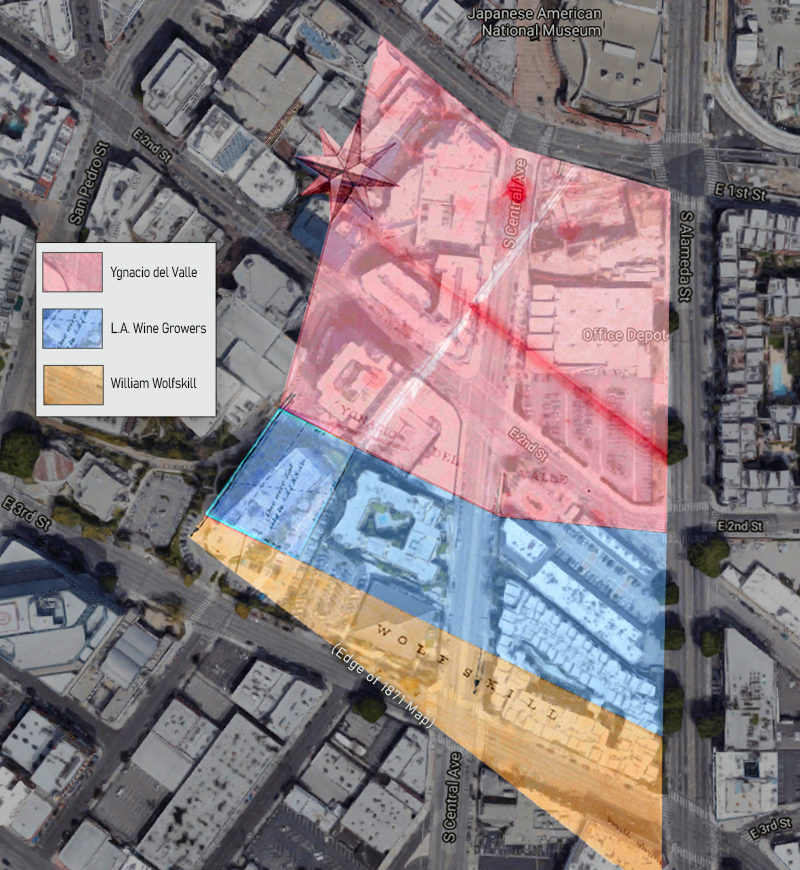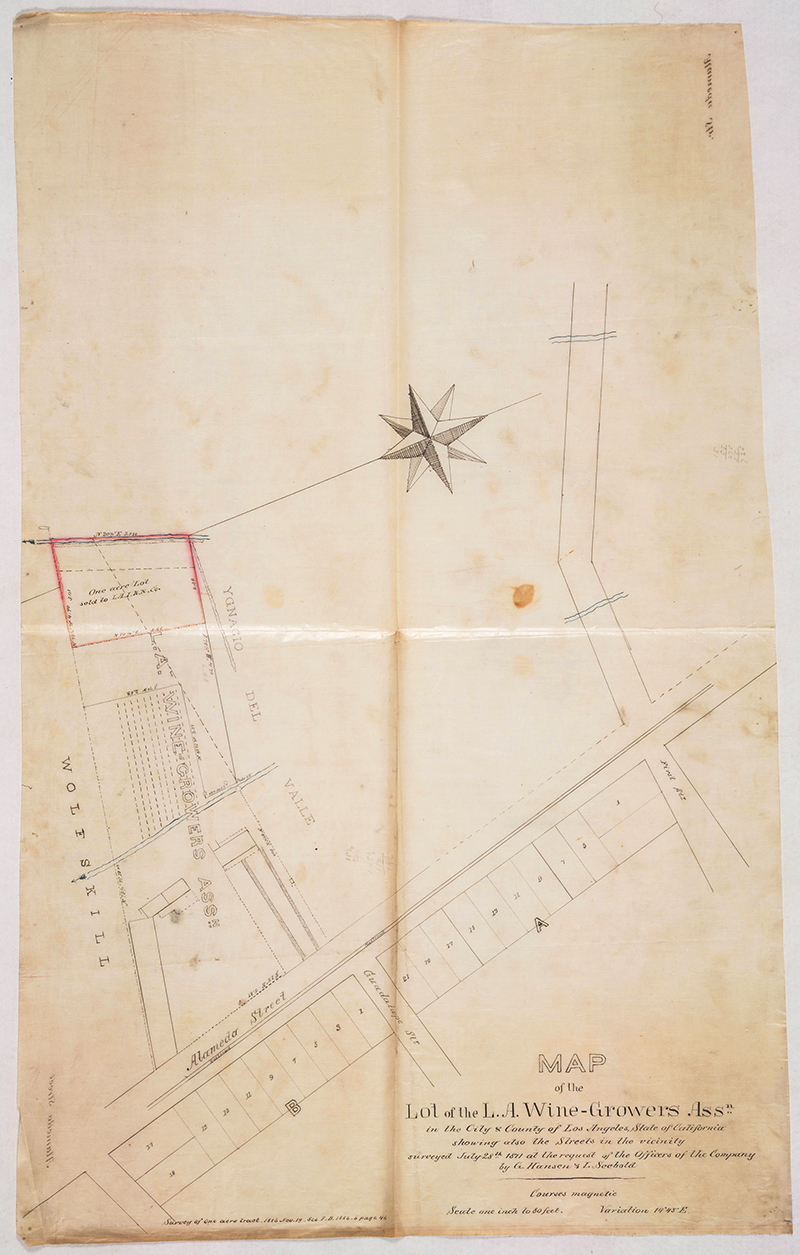Ygnacio del Valle's Los Angeles Property
Civic Leader

If Ygnacio del Valle were still alive in 2020 and still owned the Los Angeles property he owned 150 years earlier, he'd be the landlord to a large Office Depot store and other commercial buildings in Little Tokyo. His property sat southwest of the intersection of First and Alameda streets. A railway ran down the middle of Alameda — today, Metro Rail runs alongside Alameda north of First Street — and a stream ran through his property, roughly where Central Avenue is today. No stream now. Ygnacio's property was prime real estate during the Mexican and early American periods, as it was situated just south of El Pueblo de Nuestra Señora la Reina de los Ángeles — today's "Plaza Historic District" at Olvera Street. By 1871, when this historic map was drawn (overlain here on a 2020 Google Maps image), the Del Valles no longer owned the Rancho San Francisco, which constituted 48,612 acres of the Santa Clarita Valley. Locally, they had been reduced to the old rancho's westernmost 1,350 acres, known as Rancho Camulos. That's because back in 1858, Ygnacio's stepfather borrowed $8,500 from Ygnacio's L.A. neighbor, real-estate magnate William Wolfskill, and evidently didn't make the payments. Wolfskill initiated foreclosure proceedings and even tried to take a piece of Ygnacio's L.A. property. Ultimately, the Del Valles were forced to sell the majority of the SCV in 1865. Today, Wolfskill's L.A. property is the Skid Row section. The purpose of the 1871 map (below) was to accompany the survey of a new, 1-acre parcel carved out for the L.A. Wine-Growers Association. The association owned the strip of land that separated Ygnacio del Valle from William Wolfskill. Viticulture was a big deal in 1870s Los Angeles. Ygnacio had a piece of the action; in 1867 he established one of the area's first wineries at Rancho Camulos. He produced wine and distilled aguardiente, or brandy. The formation of the L.A. association was reported in the Daily Alta California on January 11, 1869: "A Wine-growers' Association has been formed in Los Angeles by the owners of vineyards who wish to have a cooperative agency for making brandy and taking care of their wine and selling it." There was already a very active "wine-growers association" in the German settlement of Anaheim. Later in the year, both associations displayed their products alongside those of Napa and Sonoma vintners at a trade show in San Francisco. (See: California Farmer and Journal of Useful Sciences, July 29, 1869.) When the archduke of Austria, Ludwig Louis Salvator, visited Los Angeles in 1876, he was certain winemaking would become L.A.'s claim to fame. (It would be another decade before Wolfskill planted orange trees all over the place, four decades before "Hollywood" happened, more decades before the aerospace industry took off, etc.) "California is destined to become one of the greatest wine-producing countries in the world," Salvator wrote (Salvator 1878:68). He declared Los Angeles to be "the best grape district of the state. ... Good vineyard land is available in large areas and at low figures. Grape cuttings are inexpensive and grow rapidly. For this reason Los Angeles will produce more wine no doubt than is now made in the entire state." Oh, well. At least he got the first part right — about California. Today, the wine growers' 1871 parcel is a highrise apartment structure with an address of 455 E. 3rd Street.
HL7101: 9600 dpi jpeg from scanned 1871 map in the Huntingon Library. Online only.
|

